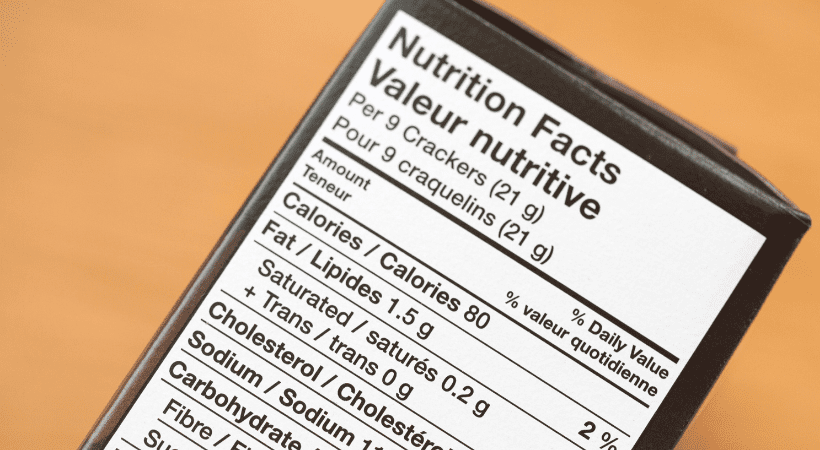What you need to know about the changes to Canadian labelling regulations
What you need to know about the changes to Canadian labelling regulations
Laura Fitzpatrick is one of our International Regulatory Advisors who specialises in Canadian and French food legislation. She’s put together a summary of the upcoming changes to Canadian labelling regulations so you can better understand what you need to be doing to prepare.
A long-awaited announcement was recently issued in Canada!
Health Canada and the Canadian Food Inspection Agency clarified the timelines for transition and enforcement of the Amendments to the Food and Drug Regulations (Nutrition Labelling, Other Labelling Provisions and Food Colours). These changes were originally announced on 14 December 2016. An initiative of Health Canada’s Healthy Eating Strategy, the changes were heralded as “Making science-based nutrition information easier to understand” for end consumers. To this end, the amendments alter both content and format of labelling information; We can offer a brief overview here:
For Nutrition Facts, the changes include:
- Updates to Serving Sizes based on more precisely regulated reference amounts, and rules for declaring nutrition for a Single-serving container,
- Formatting changes to make information on serving size and calories easier to find and read,
- Revisions to the Daily Values based on updated science,
- A new % Daily value for Total Sugars,
- Adding declaration of Potassium as a nutrient of concern,
- Removing Vitamins A & C as no longer mandatory to declare,
- Adding mg declaration for Potassium, Calcium and Iron,
- A new footnote to explain the use of the % Daily Values to consumers: “5% or less is a little, 15% or more is a lot”.
For the List of Ingredients, the amendments mean:
- Sugars-based ingredients must be grouped in brackets after the name ‘sugars’ and in descending order by weight. This means that in more cases, “Sugars” will be at the beginning or higher up in the list of ingredients. This will enable consumers to more easily identify all sources of sugars in a food.
- Food colours must be listed by their individual common names;
- Formatting rules:
- text in black font on a white or neutral background
- Minimum type height requirements for ingredients
- Bullets or commas to separate ingredients
- Enclosed by a box or offset by parallel lines or colour contrast
- Upper- and lower-case letters for the ingredients in the list
- The same format rules apply to any ‘contains’ statement to indicate the presence or potential presence of priority food allergens, gluten sources or added sulphites
The amendments also removed the requirement for certification of synthetic colours and incorporated by reference most of the food colour specifications previously laid down in the Food and Drug Regulations. Many of the basic requirements such as bilingual labelling, allergen declaration and the general rules for ingredient declaration remain.
Changes to the timeline of enforcement:
In February 2021, Health Canada and the Canadian Food Inspection Agency (CFIA) announced the following tweaks to their implementation plan: “The end of the transition period for the amendments remains 14 December 2021, but CFIA will focus its efforts on education and compliance promotion for the first year, until 14 December 2022. After 2022, CFIA will verify compliance and apply enforcement discretion for non-compliance, provided regulated parties have a detailed plan to outline how they will meet the new requirements as soon as possible, and by 14 December 2023 at the latest.”
So, there is a bit more breathing space, but of course, while changes can seem straightforward, when it comes to applying the legislation difficulties can arise; as such, we and many of our clients have begun working towards the new requirements.
Things to consider when applying the changes to your labels:
In practice, these changes are more than a refreshed appearance! It’s important to note when updating your labels, that this change in Daily Values means that we need to confirm the food’s compliance with requirements for nutrient content claims are still current. For example, whilst your previous label for a fortified beverage may have stated “Excellent source” for certain vitamins and minerals, our feedback may be to change some to “Good source of…”, “Source of…” or to remove a claim for a nutrient altogether!
As for Serving Sizes, we’ve found that the more precise rules for the declaration of the Serving Size can mean, for example, that we need to update the Nutrition Facts to declare per a larger fraction of the cake than before. These updates are meant as more accurate reflections of the likely consumption size, making them more relevant to the consumer and easier for them to compare similar products. You too may find the need to recalculate your declared values per a different amount and against different Daily Values.
We’ll continue to share any challenges and tips that we learn through our various projects leading up to enforcement; You can sign-up to our mailing list for these industry insights here.
Next reads
The Peanut Diaries: School and Social Occasions
The Peanut Diaries: Navigating Social Events and Celebrations with Food Allergies
The Peanut Diaries: A Parent’s Journey to Uncovering their Child’s Allergy
Redefining Healthy: What the FDA’s New Rules Mean for Food Labels and Nutrition Claims
Keep up to date with our latest insights
Subscribe to our mailing list to stay in touch with the latest news, insights and updates from Ashbury





